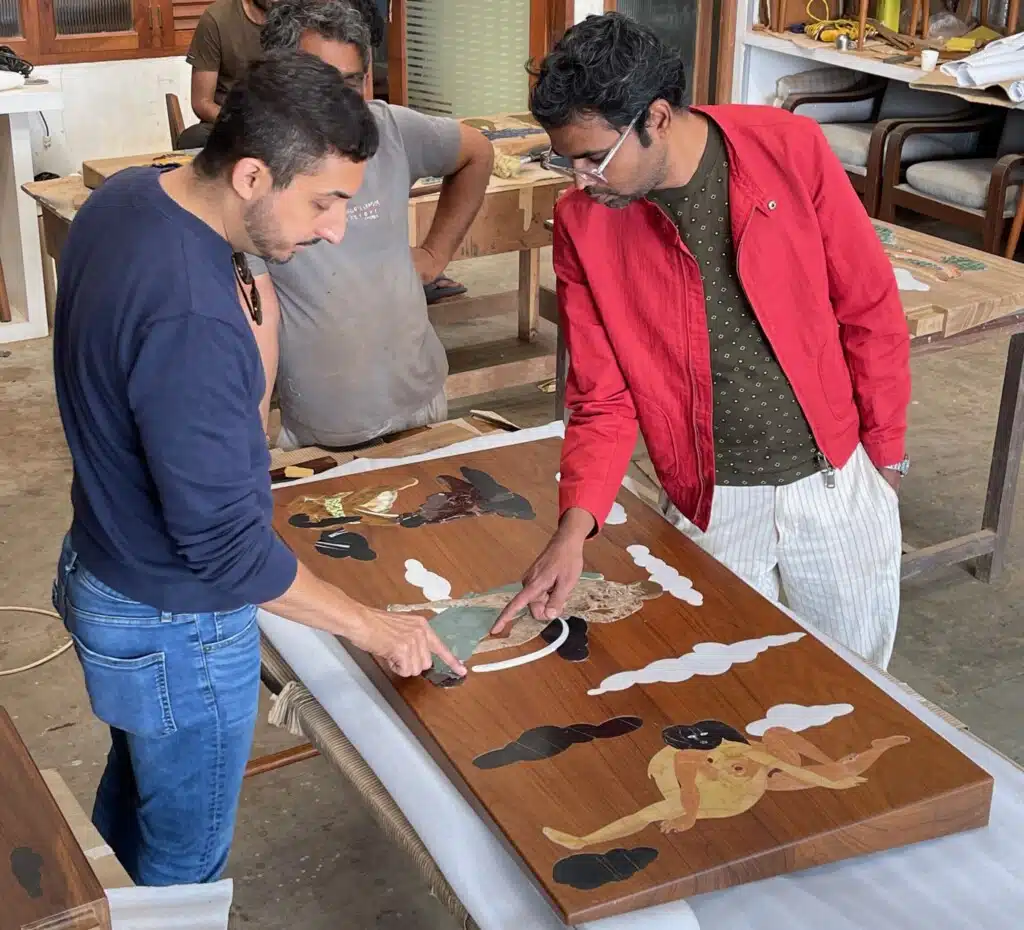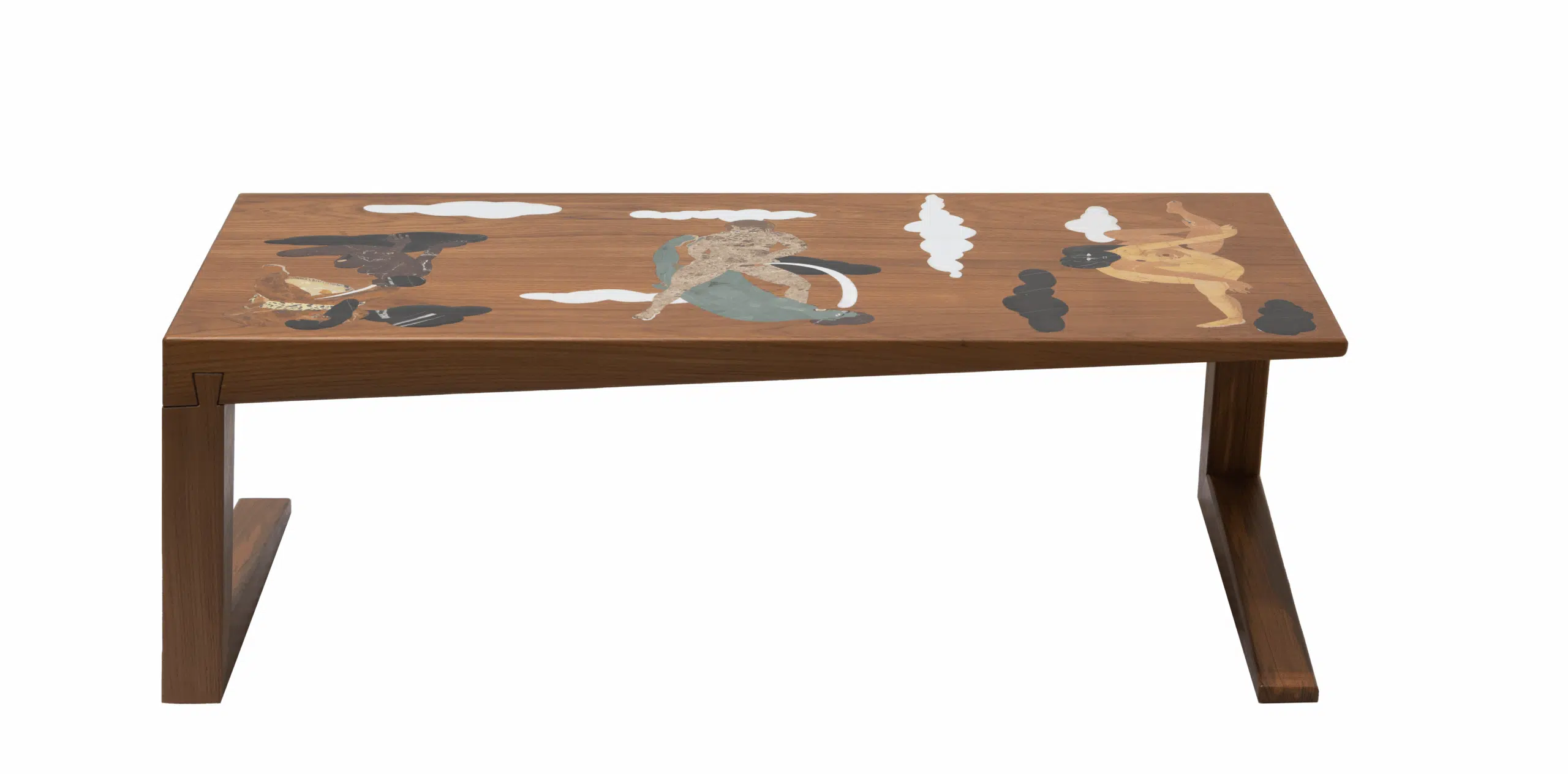Trained as an architect, Rooshad Shroff has created a distinctive aesthetic with his design studio that pays homage to Indian tradition while pushing for innovation in furniture design. His pieces offer a symphony of form and function, the latter being so important that Shroff has categorically stated that he “does not want people to treat [his] work like art”. Here, we sit down with the designer to talk about what it was like for him to return to India after many years spent training in the US and working in London, the people that have deeply shaped his work, and what compels him about creating furniture of the future while drawing from heritage and history.
Furniture seems to have a special place in your work as a designer. Can you tell us about this affinity?
Furniture, for me, is a testing ground to do all that I enjoy creating. It allows me to work in a kind of vacuum without the pressures of meeting a client brief, as might be the case for my work as an architect. I can make a chair that isn’t necessarily comfortable but that pushes the boundaries of form and craft.
Tell us about the ways in which you’re innovating furniture design, particularly with techniques such as embroidery on wood.
When I moved back to India from the US, I had the luxury of time. I was experimenting with furniture and a friend kindly lent me full access to their embroidery studio. The idea of having a skin and structure over wood was appealing and challenging to me, and the concept of embroidering wood came from here. The technique redefines traditional upholstery by enabling the embroidery to become an integral part of the wood. The embroidered panels consist of thousands of minute holes hand-drilled into the seating area, to allow for the wood to be upholstered using zardozi hand embroidery and French knotting techniques. The gridded base serves as a canvas, each piece is signed with an inlay of hand-cut brass, and then embroidered with customised patterns. We’ve done a number of variations on this theme over the last decade.


Top: Rooshad Shroff and T. Venkanna with a collaborative furniture piece with the latter’s artworks translated into marble inlays into wood. Bottom: Marble inlays of artwork being created. Courtesy of RooshadSHROFF
You’ve collaborated with a number of contemporary artists, including, most recently, T. Venkanna. Tell us a bit about that project.
I first collaborated with T. Venkanna for The Gyaan Project where we invited 12 artists to provide sketches that were then translated into marble inlays on some of our furniture pieces. This was one of the first collections that I’d done with any artist, and now it’s my goal to work with as many artists as possible to create collections of pieces. As a designer, one looks to establish partnerships that bring out and consolidate the strengths of both parties involved. And with artists, there can be no compromises, a challenge I love.
How do you distinguish art from design? And either from architecture?
The difference is in how we interact with art and design pieces. Often when furniture moves away from the retail space, it gets mistaken for a piece of art. Only to be admired and not touched. Design is a completely different ballgame that accounts for tactility, wear and tear, functionality and practicality.
Architecture has a permanence to it, which in turn, can influence and stimulate the culture within any city. It can be a catalyst for change, altering the social dynamics of a town.
You spent some time at OMA/REX in New York and Zaha Hadid Architects in London as a young architect. What’s one thing you picked up from each of those firms that still influence your practice today?
Of the three firms that I was obsessed with as a student, OMA/REX and Zaha Hadid were two. Yet, their styles couldn’t be further apart. I based a large part of my practice on the OMA/REX style of process-oriented and bottom-up approach that rethinks the mundane. Zaha helped me explore form and scale. During my undergrad in the US, I used to stop by London every single summer on my way back home to apply for an internship at Zaha’s firm, but to no avail. I finally got into that office years later, and we worked on a project for the Dubai Opera House, an entire island, with a team of over 50 people. She helped me understand the process of taking a drawing to a large-scale built form — the process of getting a dream realised.

Rooshad Shroff and T. Venkanna, Deoch and Doris (Coffee Table), 2023. Recycled old Burma teak wood with natural PU polish and marble. 2’ x 4’ x 16”. Courtesy of RooshadSHROFF
Your Hermès-on-Mars display from 2019 featured an exocolony on the red planet. What kind of architectural landmark would you build in this futuristic city?
I’ve always had a dream project and I still haven’t made it on Earth — a museum. It’s always been on my wishlist. Perhaps a museum of contemporary art. I’d like to create a space that is dynamic and evolves over time.
What are the most peaceful and stressful parts of your day?
I’m generally quite peaceful during most days. The stresses arrive with deadlines. *laughs*
How do you keep your creative instincts sharp?
Any free time that I get, I run out. I see shows and exhibitions, just to get a new perspective and not be stuck behind a desk. Art is a big source of inspiration for me. Travel also gives me a bit of quiet time, when the phone isn’t always ringing.
Dinner date with any architect, living or dead. Who would it be?
100% Zaha Hadid.
Rooshad Shroff was born in 1981 in Mumbai, India. His design studio, RooshadSHROFF will be part of India Art Fair’s inaugural Design section at the 2024 edition, along with other pioneers in the field.


